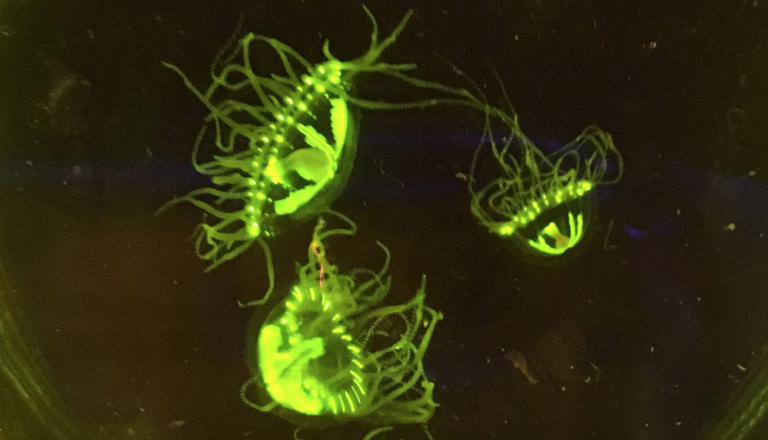Researcher finds nearly 300 dangerous clinging jellyfish in Barnegat Bay
A researcher has once again found the dangerous and invasive clinging jellyfish in an Ocean County waterway.

Clinging jellyfish (Courtesy of Dr. Paul Bologna/Montclair State University)
A researcher has once again found the dangerous and invasive clinging jellyfish in an Ocean County waterway.
Montclair State University’s Dr. Paul Bologna said 294 baby clinging jellyfish, which pack a powerful sting, were found Thursday in the northern Barnegat Bay along the banks of the Metedeconk River.
The dime-sized clinging jellyfish, native to the Pacific Ocean region, was first found in New Jersey in 2016 when a fisherman collected one near the Point Pleasant Canal in Ocean County.
Last summer, Bologna said dozens were found near the Barnegat Bay’s Tices Shoal, a popular boating area adjacent to Island Beach State Park.
The professor advises anyone spending time in the bay to be vigilant, as at least two people were stung in recent summers and needed medical attention to manage the pain.
Along the Eastern seaboard, they were first found in coastal Massachusetts in the early 20th century. They are known to spread by ships.
Oceanus Magazine describes the species as resembling “a piece of art glass or a flash bling brooch you would never want to wear” with “hula-hoop skirts of 60 to 90 glass-like tentacles that uncoil sharp threads and emit painful neurotoxin.”
A state news release advises that clinging jellyfish are not known to inhabit ocean beaches or other sandy areas. Rather, they tend to attach themselves to “submerged aquatic vegetation and algae in back bays and estuaries — areas not heavily used for swimming,” according to the release.
Officials say anyone stung by the jellyfish — which can produce severe pain, muscle cramping, and other localized symptoms — should immediately treat the impacted area:
- Apply white vinegar to the affected area to immobilize any remaining stinging cells.
- Rinse the area with salt water and remove any remaining tentacle materials using gloves or a thick towel.
- A hot compress or cold pack can then be applied to alleviate pain.
- If symptoms persist or pain increases instead of subsiding, seek prompt medical attention.
If you see a clinging jellyfish, experts say to not attempt a capture. Instead, take a photograph, if possible, and send it to Dr. Paul Bologna (bolognap@mail.montclair.edu) or Joseph Bilinski (joseph.bilinski@dep.nj.gov) along with the location.
Anyone who spots these jellyfish or anything unusual can also post to the New Jersey Jellyspotters Facebook group. The New Jersey Department of Environmental Protection manages an interactive map of confirmed sightings. It has not yet been updated for 2019.
WHYY is your source for fact-based, in-depth journalism and information. As a nonprofit organization, we rely on financial support from readers like you. Please give today.




